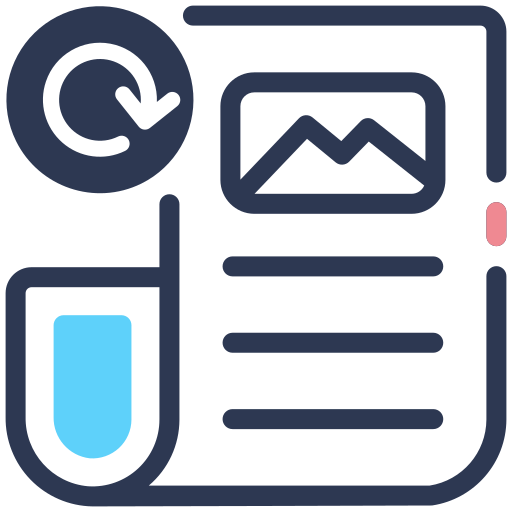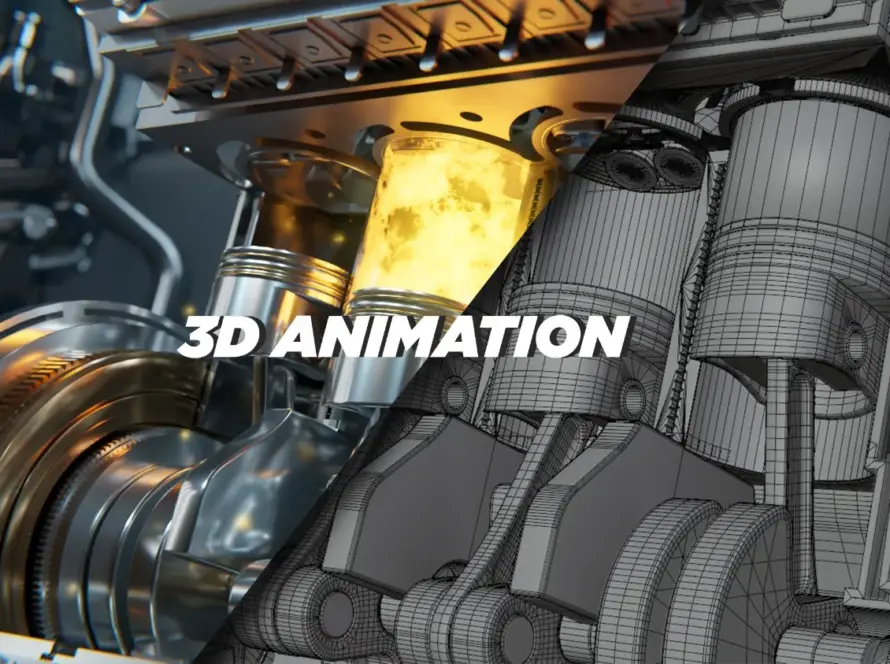
Why This Moment Matters
The collision of signal loss, speed, and scale
Advertising has always been a balancing act between art and science. Right now, three forces are rewriting the rules: (1) signal loss from privacy changes and the decline of third-party cookies, (2) the breakneck speed of culture (memes rise and die in days), and (3) the pressure to scale content across channels, audiences, and formats. AI steps in as an accelerant—not a replacement—helping humans move faster, see patterns earlier, and produce more relevant creative without burning out.
What “creative-plus-AI” actually means
Think of creativity as the “why” and “what,” and AI as the “how” and “how fast.” Humans set strategy, taste, and judgment. AI handles data digestion, pattern recognition, and endless variation. When both click, you get messages that feel handcrafted yet delivered at industrial scale.
The New Advertising Stack
Data foundation (first-party, contextual, synthetic)
The era of collecting everything is over; now it’s about collecting the right things—consented first-party data, contextual signals (what content people are engaging with), and carefully generated synthetic data to safely test ideas. Clean rooms, consent management platforms, and durable IDs help you respect privacy while still learning.
Models and engines (predictive, generative, optimization)
Predictive models forecast outcomes (like which channels will lift sign-ups). Generative models create drafts—copy, images, storyboards. Optimization engines decide which creative to show to whom, and when. Stitch these together and you get a living system: learn → create → test → learn again.
Human craft layers (strategy, storytelling, design)
Strategy defines the brand’s edges: who we are, what we refuse to do, and what promise we keep. Storytelling gives shape to that promise—characters, tone, tension, resolution. Design translates it to pixels and motion. AI supports, but the human taste bar remains the north star.
From Brief to Breakthrough—A Hybrid Workflow
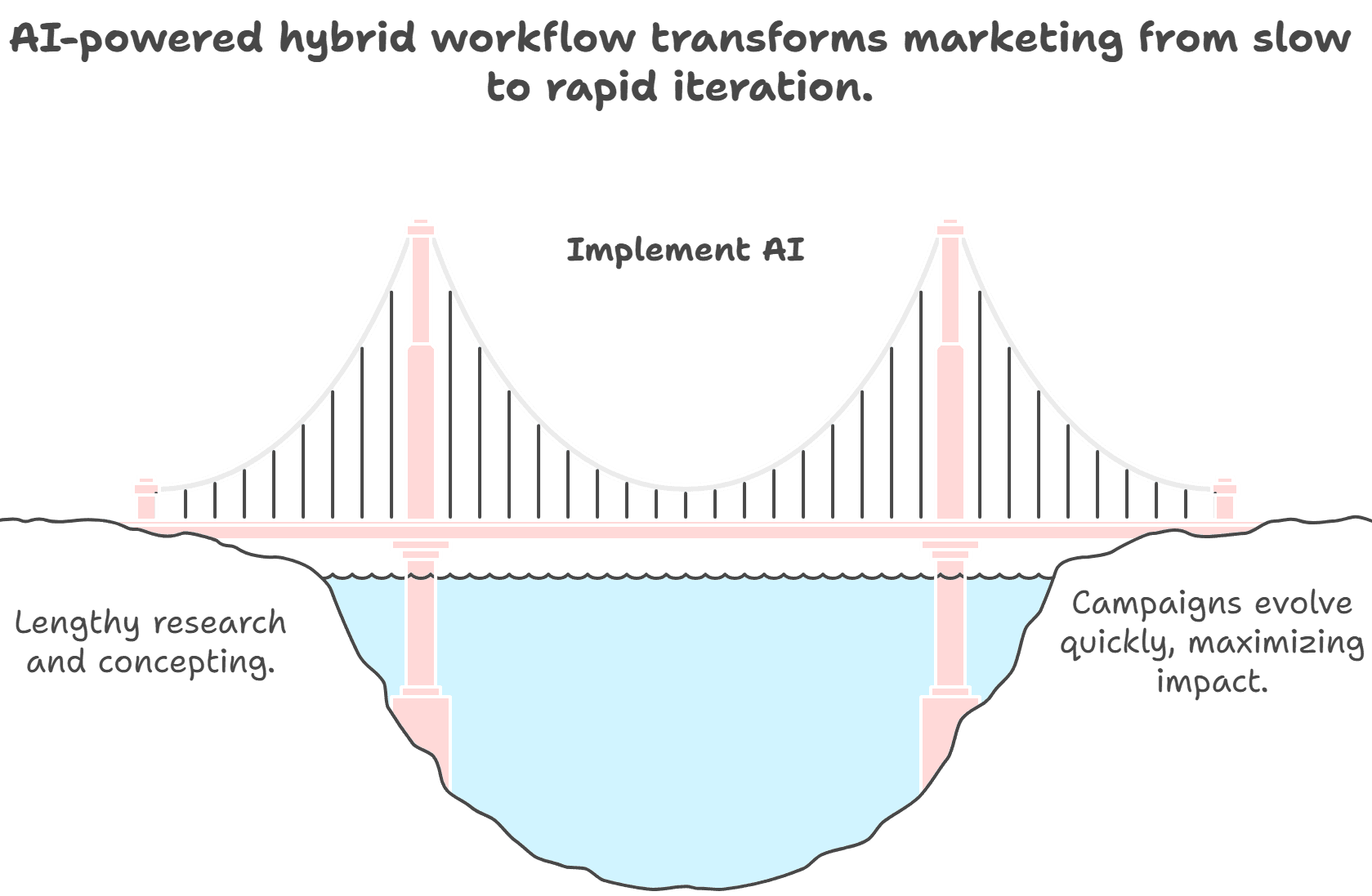
Insight mining with AI
Before a single line is written, AI can synthesize reviews, search queries, help tickets, and social chatter into pain points and desire paths. You might discover, for example, that your audience doesn’t just want “fast shipping”—they want predictability. That subtle shift changes your whole story.
Concepting and moodboards
Creative teams can prompt image and video generators to explore visual territories—“warm, tactile materials,” “neo-brutalist UIs,” “lived-in kitchen vs. showroom gloss.” You’re not asking AI for the final look; you’re using it to map the terrain in an afternoon instead of two weeks.
Copy, visuals, and variations at scale
Once a concept is chosen, AI helps spin headlines, CTAs, and scripts tailored to segments. It drafts options in different voices (playful, authoritative, minimalist) while designers iterate banners and short videos in multiple aspect ratios. Humans prune aggressively—what remains is on-brand and crystal clear.
Pre-viz, pre-test, and rapid iteration
Before you buy media, preview how a spot plays in six-second, 15-second, and 30-second cuts. Test key frames and hooks with small panels or synthetic audiences. Kill the weak, double down on the strong. Your campaign evolves before it spends.
Personalization Without Creepiness

Dynamic creative optimization (DCO) done right
DCO once meant swapping out a background image and calling it a day. Now, it’s narrative-level personalization—different openings based on context (weather, time of day), product highlights tuned to intent signals, and value props adapted to lifecycle stage. The rule: relevant, not revealing. If the ad feels like surveillance, you’ve gone too far.
Privacy, consent, and value exchange
People share data when they get value back—better recommendations, accurate delivery windows, genuinely helpful content. Clear consent flows and honest messaging build trust. Use privacy as a creative constraint: “We don’t track you around the web; we earn your attention here.”
Media Buying Gets a Brain
Predictive spend allocation
Budgeting shifts from quarterly guesswork to continuous optimization. AI forecasts marginal returns per channel and audience, redistributing spend as performance shifts. It’s not just ROAS anymore; it’s contribution to incremental revenue and long-term brand lift.
Attention and incrementality over vanity metrics
Click-through rates can lie. Attention signals (viewability time, interaction depth) and incrementality tests (geo-splits, holdouts) show whether your ads actually changed behavior. AI helps run those tests at scale and translate noisy data into clear decisions.
Measurement 2.0
Mixed models, causal lift, and creative diagnostics
No single metric rules them all. Combine media mix modeling for strategy, multi-touch attribution for directional insights, and causal lift experiments for ground truth. Then layer in creative diagnostics—AI reads frames and transcripts to tag hooks, product moments, and emotional arcs, correlating them with outcomes. You learn which ideas drive business, not just which placements.
Using AI to read what humans feel
Sentiment analysis has grown up. With multimodal models, you can analyze voice tone, pacing, and facial micro-expressions from voluntary research panels to infer emotion (delight, confusion, trust). Keep it ethical: opt-in data, anonymized analysis, and human review.
Guardrails: Brand Safety, Bias, and IP
Setting ethical boundaries
Define red lines in advance: no targeting sensitive attributes, no deepfakes of real people, no synthetic endorsements. Enforce with automated checks plus manual approvals. Ethics isn’t a compliance box—it’s reputation insurance.
Rights management in the AI era
Track the provenance of assets, the licenses attached, and the terms of generated content. Maintain a “model card” for each tool noting training data disclosures and usage restrictions. Create a takedown plan in case an asset is challenged. Legal calm beats legal drama.
The Creative Team of Tomorrow
New roles, skills, and rituals
Expect hybrids: Creative Technologists who know prompts and pixels; Data Strategists who speak human; Producers who orchestrate AI pipelines. Daily rituals change too—stand-ups include model performance notes and creative learnings, not just deadlines.
Tools you’ll actually use
- Ideation: multimodal generators for moodboards, rough cuts, VO drafts.
- Production: versioning systems for assets and prompts, collaborative review hubs.
- Media/Measurement: predictive budgeters, attention analytics, incrementality testers.
Pick fewer tools that integrate well. A messy stack is a creativity tax.
Practical Playbook

A 90-day plan for any brand
Days 1–30: Discover & Define
- Audit data and consent; identify durable signals you can trust.
- Determine 2–3 brand territories (e.g., “reliably there,” “quietly premium,” “playfully bold”).
- Build an AI brief template: audience, tension, proof, constraints, tone guardrails.
Days 31–60: Prototype & Prove
- Produce three campaign concepts with AI-assisted moodboards and scripts.
- Cut 6s/15s assets, 3 display variations, and 2 email journeys for each.
- Run small lift tests; pick a winner based on attention and incremental impact.
Days 61–90: Scale & Systemize
- Roll out a DCO matrix: 3 hooks × 3 benefits × 3 CTAs × 3 formats.
- Implement weekly budget re-allocation guided by predictive models.
- Stand up a creative intelligence dashboard: what hooks work by audience and channel.
Sample prompts and frameworks
Creative Territory Prompt
“Generate five campaign territories for a [brand/category] targeting [audience]. Each territory must include a core tension, a human insight, a 15-word brand promise, and three visual metaphors. Exclude clichés. Keep tone [adjective, adjective].”
Hook Optimization Prompt
“Given these three hooks, produce six-second openings for short video that land the benefit by second 3. Provide one ‘pattern interrupt’ option per hook.”
DCO Matrix Prompt
“Create a matrix: [3 brand benefits] × [3 audience intents] × [3 CTAs]. For each cell, write a headline (max 8 words) and a 20-word body that stays on this tone guide: [tone].”
Mistakes to Avoid
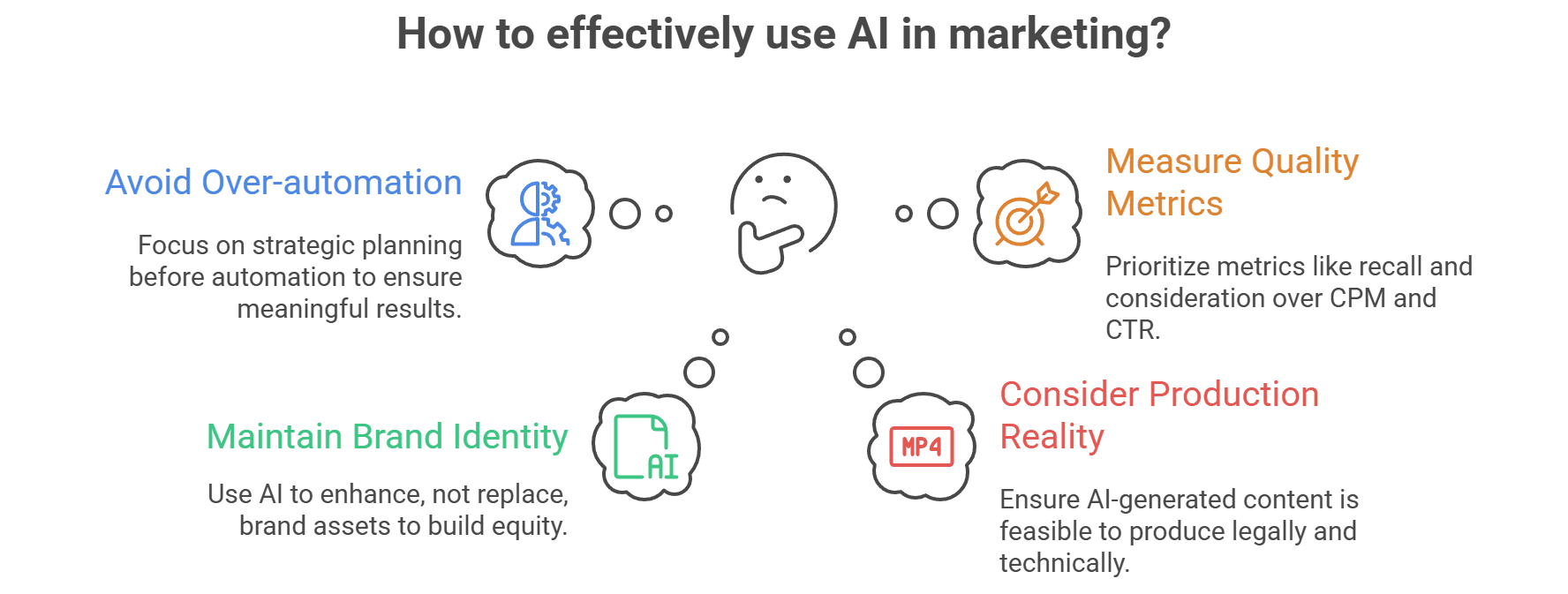
Over-automation, under-strategy
If you automate weak strategy, you’ll simply deliver more of what doesn’t move the needle. Start with a sharp POV: what you stand for and why that matters now.
Chasing novelty vs. building equity
Shiny AI tricks can hijack attention but drain brand meaning. Filter every execution through your distinctive brand assets—color, sonic logo, characters, visual grammar. Let AI remix them; don’t let it erase them.
Ignoring production reality
A stunning AI storyboard is useless if you can’t legally or technically produce it. Close the loop early with producers and legal.
Measuring the wrong thing
Optimizing to lowest CPM or highest CTR can punish quality. Protect metrics like aided recall, consideration, and incremental revenue.
Five Mini Case Snapshots
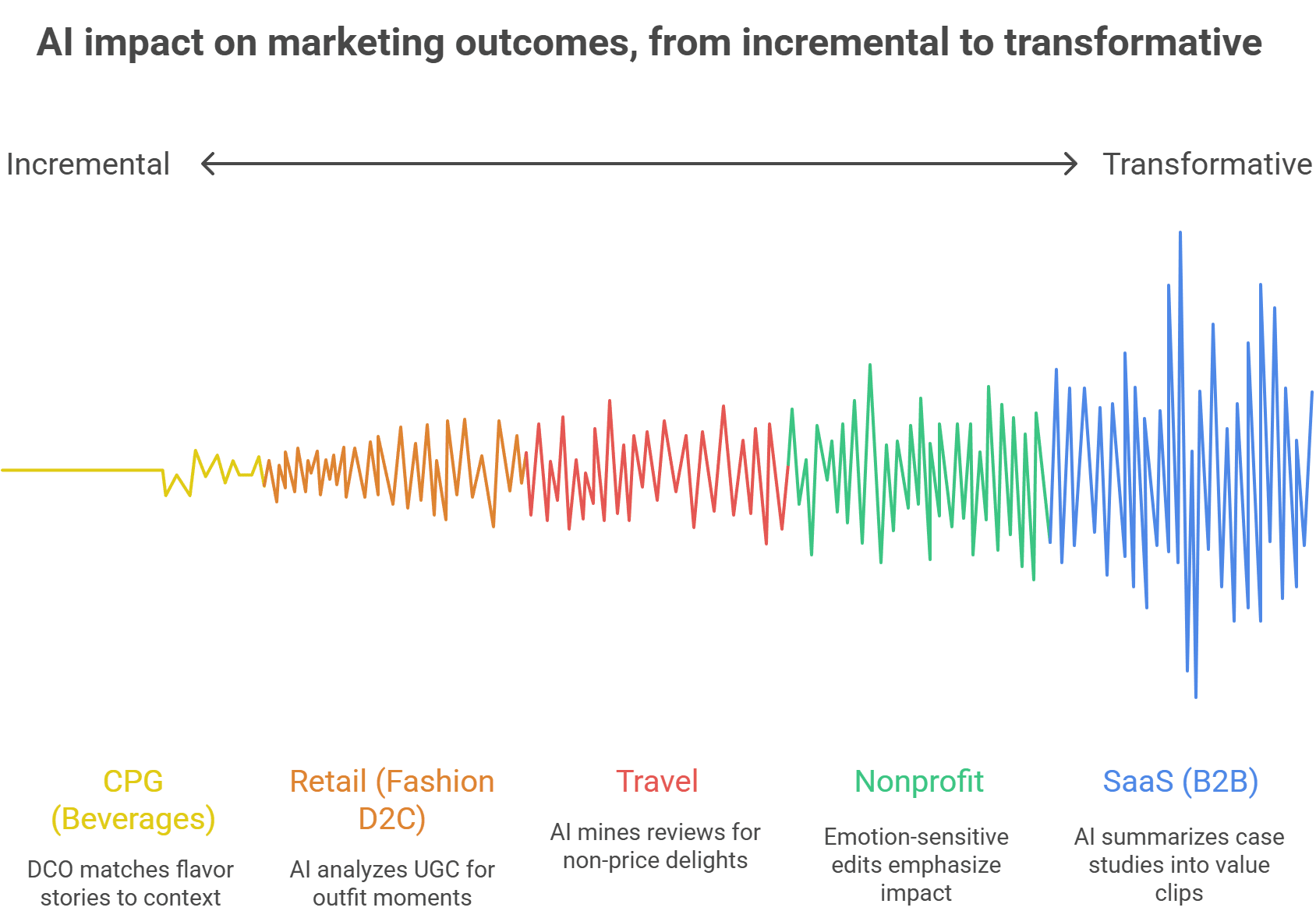
Retail (Fashion D2C)
Problem: ad fatigue and seasonal churn.
Approach: AI analyzed UGC to extract real-world outfit “moments” (first date, office debut). Creative spun into story-led carousels. Predictive budgets favored high-attention placements on drop days.
Result: +18% incremental sales during launches; lower creative costs due to reusable story templates.
CPG (Beverages)
Problem: regional taste differences.
Approach: DCO matched flavor stories to context (weather, time of day) and occasion (study session vs. party). AI flagged a citrus-forward hook as top-performer with afternoon audiences.
Result: +9% lift in repeat purchases; stronger afternoon conversion windows.
SaaS (B2B)
Problem: long sales cycles, content overload.
Approach: AI summarized case studies into role-specific value clips (CIO vs. ops lead). Attention analytics guided re-cuts; causal tests validated lift in demo bookings.
Result: +27% qualified demos with fewer, sharper assets.
Travel
Problem: intense competition on price.
Approach: AI mined reviews for “non-price” delights (unexpected local tips, smoother transfers). Creative leaned into concierge-style honesty.
Result: +14% conversion lift from story-oriented landing pages.
Nonprofit
Problem: donor fatigue.
Approach: Emotion-sensitive edits emphasized transparent impact updates, not guilt. Predictive models surfaced lookalikes of long-term donors.
Result: +11% donor retention over six months.
What’s Next (2026–2030)
Multimodal, agents, and ambient media
Multimodal models already craft scripts, frames, and sound; next, agents will coordinate entire micro-campaigns—setting tests, reallocating budget, and briefing creators autonomously (with human approval). Media itself becomes ambient—interactive screens, AR layers, and voice surfaces that respond to context. The big win goes to brands that keep a human center: empathy, taste, character.
Conclusion
AI doesn’t replace creativity – it removes the friction around it. When humans decide the story and AI handles the heavy lifting—insights, variations, and optimization—advertising gets faster, smarter, and more respectful of people’s time and privacy. The future belongs to brands that pair a distinctive point of view with systems that learn, test, and evolve. Build your data ethics, sharpen your creative spine, and let AI be the engine that turns strategy into momentum.
Quicktime Production wins SME Business of the Year Award 2025 by Great Companies. Read More.


